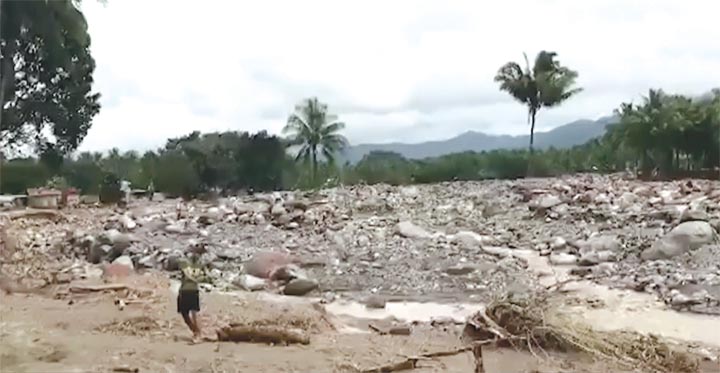
THE Philippines may incur losses of over 5 percent of GDP annually, or the country’s annual infrastructure budget, due to climate change, according to the latest Asia Pacific Disaster Report 2021 released by the United Nations (UN).
The UN Economic and Social Commission for Asia and the Pacific (ESCAP) report, launched on Wednesday, also noted that the Philippines’s annual average losses from rising temperatures and emissions could cost the country over $20 million a year.
“The string of record-breaking weather events show that we do not have the luxury of ‘waiting this out’: action must be taken now to address these risks,” Special Representative of the United Nations Secretary-General for Disaster Risk Reduction, Mami Mizutori said.
“This includes increasing international funding for disaster risk reduction and climate adaptation, especially for countries graduating from the least-developed category,” she added.
The report said the poor in the Philippines are among the most vulnerable in Southeast Asia based on estimates using representative concentration pathways (RCPs).
The data showed that RCP 4.5 stands for moderate climate change scenarios while RCP 8.5 are severe climate change scenarios.
Under RCP 4.5, 15 percent of the country’s poorest could experience multihazard cascading risks due to climate change between 2020 and 2039.
The moderate climate change estimates also showed that the affected population is bound to increase to as much as 24 percent of the poorest Filipinos between 2040 and 2059.
In terms of RCP 8.5 or the severe climate change scenarios, 26 percent of the country’s poorest will be affected by multihazard cascading risks between 2020 and 2039. The number is seen to increase to 30 percent between 2040 and 2059.
“The poor populations at the greatest risk under RCP 8.5 live in: Bangladesh, India and Nepal in South and South-West Asia; Myanmar, Lao People’s Democratic Republic and Philippines in Southeast Asia,” the report stated.
“The top 5 countries which are at the greatest increase in risk, between 2020 and 2040, are Pakistan, Afghanistan, Bhutan, Myanmar and Cambodia,” it added.
The impact of climate change on natural and other biological hazards in the Philippines include more heatwaves which could increase death due to heatwaves by 1 percent.
The rising sea levels and excessive flooding in the country could increase by more than 50 million the number of Filipinos exposed to these risks.
The Unescap noted that in 2019 alone, over 19 million people were displaced by natural hazards in Asia and the Pacific, which accounted for around three-quarters of the global total.
The Asia-Pacific region had the four largest numbers of people displaced that year: India, 5.1 million people; Philippines, 4.1 million people; Bangladesh, 4.1 million people; and China, 4 million people.
“Notwithstanding the progress made by many countries in devising more robust systems of early warning and responsive protection—with far fewer people dying as a result of natural disasters—the Covid-19 pandemic has demonstrated that almost without exception, countries around the world are still ill-prepared to deal with multiple overlapping crises, which often cascade, with one triggering another,” said Armida Salsiah Alisjahbana, United Nations undersecretary-general and executive secretary of ESCAP. “Tropical cyclones, for example, can lead to floods, which lead to disease, which exacerbates poverty.”
The triple threat of disease, disaster and climate change is causing not only considerable human hardship but also significant economic losses. Currently, the annual average disaster-related losses are $780 billion.
This could nearly double, to around $1.4 trillion, in a worst-case climate scenario. Choosing a proactive strategy of adapting to natural and other biological hazards would be far more cost-effective at an annual cost of $270 billion.

